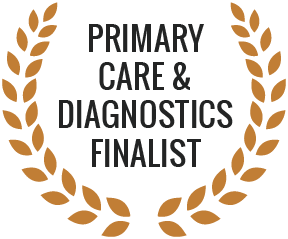Hyperpigmentation is diagnosed through physical examination, detailed patient history, & sometimes a Wood’s lamp (blacklight). Treatment options will vary depending on your individual case. If you are experiencing hyperpigmentation & would like to know what’s causing it, & how to get rid of it, your best bet is to come in for an appointment with one of our dermatologists. We can help you get to the root of the problem, & offer you the safest & most effective options for treatment.
Definition
Hyperpigmentation is a darkening of the skin or nails, which can affect an individual patch of skin, or be spread over larger areas, & can appear anywhere on the body. It is caused by an increase in melanin (the pigment that creates the natural colour of our skin, hair & eyes), is more common in those with darker skin tones, & is usually a symptom of another condition.
Symptoms
The only symptom of hyperpigmentation is a darkened area or areas of skin, caused by an increase in melanin resulting from stimulation of melanocytes, which produce pigment. Some conditions that cause hyperpigmentation include:
- Melasma (chloasma), an incredibly common condition which is triggered by hormonal changes, exacerbated by sun exposure, & often develops during pregnancy, appearing most commonly on the face & abdomen (such as linea nigra, a hyperpigmented line that appears on the belly during pregnancy).
- Sunspots (liver spots, solar lentigines), caused by sun exposure, usually occurring in areas of skin that have seen a lot of sun over a long period of time.
- Post-inflammatory hyperpigmentation is a result of trauma to the skin, such as acne or injury, or sometimes laser surgery & dermabrasion; as the skin heals, it leaves behind a flat area of discolouration.
- Dermatitis (allergic contact dermatitis, stasis dermatitis), which occurs in response to an allergen & which can lead to patches of discoloured skin.
In general, hyperpigmentation is not a sign of a serious medical condition. There are some systemic conditions that can cause hyperpigmentation, however, such as:
- Addison’s disease, a condition caused by adrenal insufficiency in which a reduced production of cortisol & aldosterone elevates the hormones that stimulate melanin
- synthesis (such as melanocyte-stimulating hormone (MSH)).
- Acanthosis nigricans, in which patches of skin become dark & velvety
- Peutz-Jeghers syndrome, a genetic disorder featuring hyperpigmented macules on the lips & inside the mouth.
- Ringworm infections (tinea corporis, tinea pedis, tinea cruris), a type of fungal infection that can cause areas of skin hyperpigmentation.
- Cushing syndrome, in which the body produces too much cortisol hormone; other symptoms of Cushing syndrome include weight gain, purple stretch marks, muscle weakness & fatigue, increased thirst & urination, & cognitive dysfunction.
- Ichthyosis Vulgaris, a condition where the skin doesn’t shed dead cells, causing an accumulation of brown scales. This is not technically hyperpigmentation, but may be confused with it, as it causes a darkening of the skin colour.






















